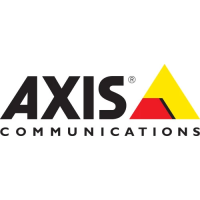What to do if there is limited space for uploading files on my Axis M5014?
- JJessica JohnsonSep 12, 2025
If you have limited space for uploading files, delete existing files to free up space.

What to do if there is limited space for uploading files on my Axis M5014?
If you have limited space for uploading files, delete existing files to free up space.
What to do if the SD card cannot be mounted on my Axis Security Camera?
If the SD card cannot be mounted, reformat the SD card and then click Mount.
What does it mean if the status indicator LED is flashing red and the Axis M5014 Security Camera is inaccessible?
When the status indicator LED is flashing red and the product is inaccessible, it indicates that a firmware upgrade has been interrupted or the firmware has been damaged. Follow the emergency recovery procedure.
| Maximum resolution | 1280 x 720 pixels |
|---|---|
| Supported video modes | 720p |
| Video formats supported | H.264, M-JPEG |
| Supported graphics resolutions | 1280 x 720 (HD 720) |
| Pan range | -180 - 180 ° |
| Tilt angle range | 0 - 90 ° |
| Camera shutter speed | 1/25000 - 1/6 s |
| Minimum illumination | 1.4 lx |
| Sensor type | CMOS |
| Progressive scan | Yes |
| Optical sensor size | 1/4 \ |
| Digital zoom | 3 x |
| Focus adjustment | 1.8 |
| Sample rate | 16 kHz |
| Audio formats supported | AAC |
| Cabling technology | 10/100Base-T(X) |
| Supported network protocols | IPv4/v6, HTTP, HTTPS, QoS Layer 3 DiffServ, FTP, SMTP, Bonjour, UPnP, SNMPv1/v2c/v3(MIB-II), DNS, DynDNS, NTP, RTSP, RTP, TCP, UDP, IGMP, RTCP, ICMP, DHCP, ARP, SOCKS |
| Power source type | PoE |
| Ethernet LAN (RJ-45) ports | 1 |
| Certification | EN 55022 A, EN 61000-6-1, EN 61000-6-2, EN 55024, FCC Part 15 Subpart B B, ICES-003 A, VCCI B, C-tick AS/NZS CISPR 22, KC Class A, EN 60950-1 IEC 60529 IP51 |
| Processor model | ARTPEC-3 |
| Placement supported | Outdoor |
| Form factor | Dome |
| Mounting type | Ceiling |
| Housing material | Plastic |
| International Protection (IP) code | IP51 |
| Flash memory | 128 MB |
| Internal memory | 256 MB |
| Compatible memory cards | microSDHC |
| Operating temperature (T-T) | 0 - 45 °C |
| Operating relative humidity (H-H) | 20 - 80 % |
| Weight | 330 g |
|---|
Compliance with CE marking directives and harmonized standards.
EMC standards for radio frequency emission and immunity.
FCC compliance for digital devices and interference correction measures.
Compliance with IEC/EN 60950-1 for Information Technology Equipment.
Definitions of DANGER, WARNING, CAUTION, and NOTICE levels.
Steps to access the product using a web browser.
Requirements for accessing the product remotely via the Internet.
Procedure for setting the administrator root password for secure access.
Essential settings for initial product configuration: Users, TCP/IP, Date & Time.
Defining include and exclude windows for motion detection.
Configuring audio detection threshold and enabling alarms.
Installing and managing licenses for third-party applications.
Steps for uploading, installing, and configuring applications.
Converting legacy event types to action rules for UI visibility.
Defining conditions and actions for automated product responses.
Using applications, detectors, hardware, and input signals as triggers.
Using PTZ status, storage issues, system status, and time as triggers.
Actions like overlay text, PTZ control, recording, and sending notifications.
Defining recipients for event notifications and media files.
Accessing, playing, downloading, and removing recorded videos.
Configuring continuous video recording to storage devices.
Saving and starting a continuous recording.
Managing users, access levels, and ONVIF communication.
Setting HTTPS connection policies for user groups.
Configuring IEEE 802.1X for port-based network admission control.
Configuring IPv4 and IPv6 address settings.
Configuring NAT traversal for making the product available from the WAN side.
Configuring NAT traversal and UPnP for network access.
Procedures for mounting and unmounting the SD card safely.
Procedure for resetting the product to its original factory default values.
Verifying the firmware version to identify potential issues.
Steps to download and install new firmware for the product.
Steps to recover the product after a failed firmware upgrade.
Solutions for problems when setting the product's IP address.
Troubleshooting login failures and certificate errors.
Diagnosing issues with external access, router configuration, and firewalls.
Resolving issues with H.264 display, multicast, and image quality.
Details on sensor, lens, illumination, shutter, and PTZ capabilities.